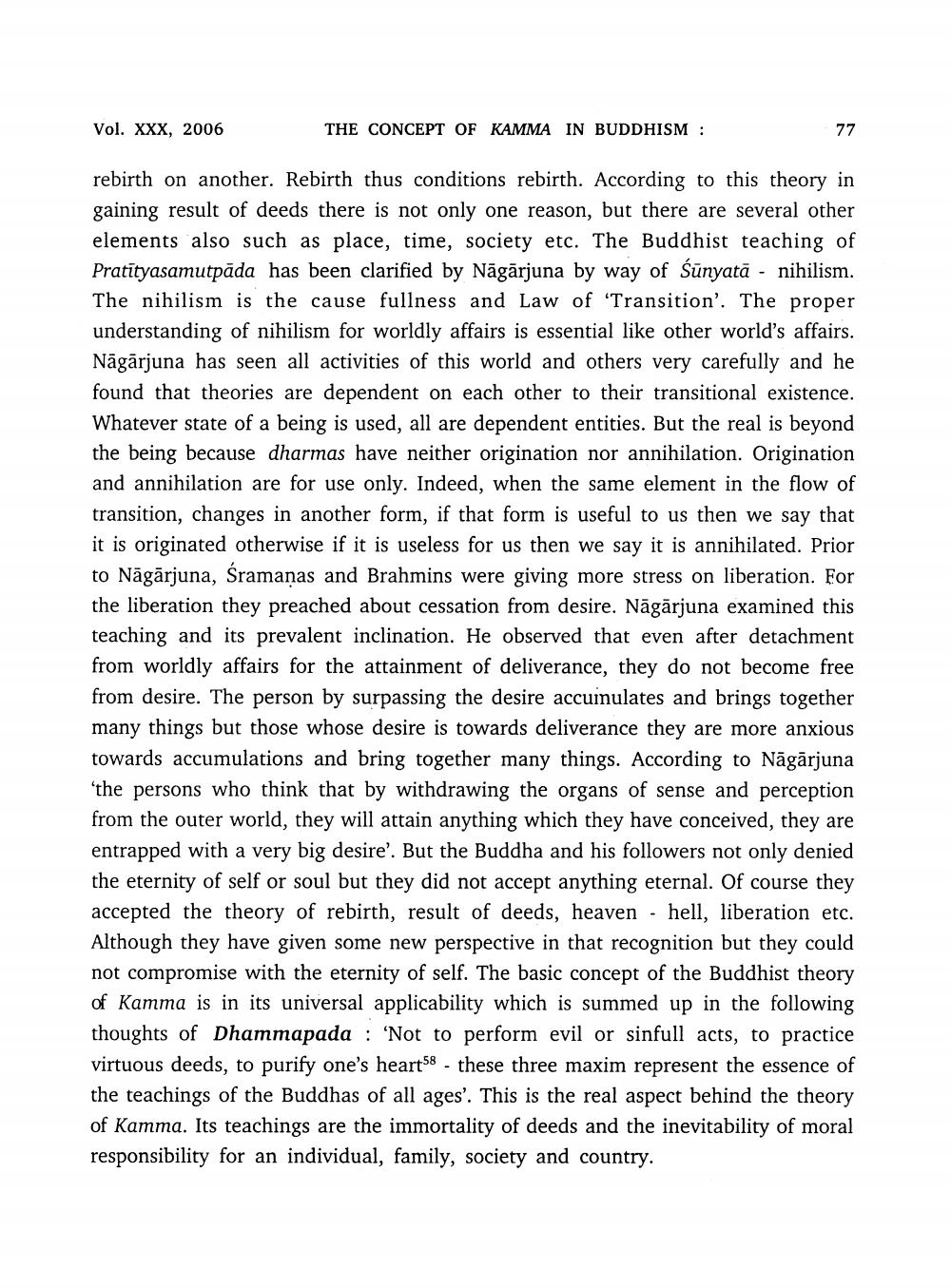________________
Vol. XXX, 2006
THE CONCEPT OF KAMMA IN BUDDHISM :
77
rebirth on another. Rebirth thus conditions rebirth. According to this theory in gaining result of deeds there is not only one reason, but there are several other elements also such as place, time, society etc. The Buddhist teaching of Pratītyasamutpada has been clarified by Nāgārjuna by way of Sūnyatā - nihilism. The nihilism is the cause fullness and Law of 'Transition'. The proper understanding of nihilism for worldly affairs is essential like other world's affairs. Nāgārjuna has seen all activities of this world and others very carefully and he found that theories are dependent on each other to their transitional existence. Whatever state of a being is used, all are dependent entities. But the real is beyond the being because dharmas have neither origination nor annihilation. Origination and annihilation are for use only. Indeed, when the same element in the flow of transition, changes in another form, if that form is useful to us then we say that it is originated otherwise if it is useless for us then we say it is annihilated. Prior to Nāgārjuna, Sramanas and Brahmins were giving more stress on liberation. For the liberation they preached about cessation from desire. Nāgārjuna examined this teaching and its prevalent inclination. He observed that even after detachment from worldly affairs for the attainment of deliverance, they do not become free from desire. The person by surpassing the desire accuinulates and brings together many things but those whose desire is towards deliverance they are more anxious towards accumulations and bring together many things. According to Nāgārjuna 'the persons who think that by withdrawing the organs of sense and perception from the outer world, they will attain anything which they have conceived, they are entrapped with a very big desire'. But the Buddha and his followers not only denied the eternity of self or soul but they did not accept anything eternal. Of course they accepted the theory of rebirth, result of deeds, heaven - hell, liberation etc. Although they have given some new perspective in that recognition but they could not compromise with the eternity of self. The basic concept of the Buddhist theory of Kamma is in its universal applicability which is summed up in the following thoughts of Dhammapada : Not to perform evil or sinfull acts, to practice virtuous deeds, to purify one's heart58 - these three maxim represent the essence of the teachings of the Buddhas of all ages'. This is the real aspect behind the theory of Kamma. Its teachings are the immortality of deeds and the inevitability of moral responsibility for an individual, family, society and country.




